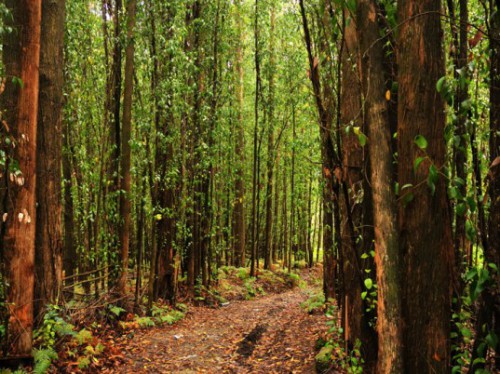Denim made from sustainable wood pulp, rather than cotton, could be the key to reducing the jeans industry’s sizable environmental footprint, according to a fashion student at Heriot-Watt University in Scotland. Dawn Ellams, a Ph.D researcher at the School of Textiles and Design, developed her “no-cotton” jeans using pulp from the eucalyptus tree, which is then spun into cotton-like yarn marketed under the trade name of Tencel. She also used digital-printing technology to replicate the stone-washed effect denim aficionados crave. Despite their physical similarities, Ellams says her “wooden” jean uses only a fifth of the water, energy, and chemicals required by its conventional counterpart.
going out on a limb
Producing a single pair of cotton-denim jeans, Ellams says, isn’t just energy intensive. It also uses an average of 42 liters of water, along with up to 15 dyeing vats full of harmful chemicals. Her greener alternative, however, costs roughly £27 ($42) to make. It also drastically reduces carbon emissions through a closed-loop production process that manages close to 100 percent recovery of the solvent used to render the wood into fiber.
A pair of cotton-denim jeans uses an average of 42 liters of water, along with up to 15 dyeing vats full of harmful chemicals.
A pair of cotton-denim jeans uses an average of 42 liters of water, along with up to 15 dyeing vats full of harmful chemicals.
“The sustainability issues associated with the manufacturing of cotton garments are already well understood, yet the use of cotton shows no sign of diminishing,” she says. “The research challenged the design and manufacture of denim jeans, probably the most iconic use of cotton. The overall aim was to reduce greenhouse-gas emissions and water use associated with conventional manufacturing for denim jeans.”
Another plus? Eucalyptus grows rapidly without the need for pesticides, artificial irrigation or gene manipulation, according to Lenzing, the Austrian fiber company that popularized the material. The fiber yield with Tencel is also 10 times higher than with conventional cotton, even when grown on so-called “marginal lands” that cannot be used to cultivate food crops, it adds.
Ellams’ goal is to create an entire collection, even a eucalyptus-based dress or two.
[source: ecouterre]



